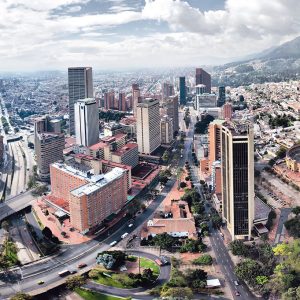Transportation and Transfers
There is an excellent internal air network that connects the main cities, including those on the Caribbean coast. There are also local helicopter flights. Flights between the mainland and the islands of San Andrés and Providencia operate from most major Colombian cities. The main national airlines are Avianca Latam, Copa Airlines and Satena
Some areas are inaccessible by road, such as the Amazon River border city of Leticia, which must be accessed by air. Other areas have road routes but a flight will be much more convenient and not too expensive; For example, Bogotá to Cartagena is a 1 hour and 25 minute flight, but the bus ride takes 20 hours. Flights are cheapest when purchased well in advance, but are still reasonably priced at short notice.
The departure tax for internal flights varies depending on your airline. Some include it in the ticket, others charge separately up to approximately US$10, but keep in mind that this situation is constantly changing.
Gastronomy
It should be considered that all water is potentially contaminated outside of large cities. Water used for drinking, brushing teeth, or making ice must be boiled or otherwise sterilized. However, bottled water is widely available across the country, even in rural towns, so you can always make sure you have some. Milk may not be pasteurized in places and must be boiled.
Ideal to eat meat and fish well cooked. When buying food from stalls or markets, try to make sure the food hasn’t been sitting there for a while and is kept warm enough to kill germs. Vegetables must be cooked and fruit must be peeled. There is an abundance of fruit available throughout Colombia, including pre-cut fruit bagged and sold on beaches or at stalls in tourist areas. Buying whole fruit in the markets is both cheaper and more hygienic, and will help prevent contamination.
Internet availability
There are internet cafes in most cities. Most hotels and hostels in the larger cities offer free Wi-Fi, and the connection is usually quite good.
Electricity and Standard Plugs
Electrical outlets (outlets) in the Republic of Colombia usually supply electricity between 110 and 120 volts of alternating current. If you’re connecting a 120 volt US or Canadian device, or a multi-voltage compatible device, then an adapter is all you need.
But travel plug adapters don’t change voltage, so the electricity coming through the adapter will still be the same 110-120 volts that the plug is supplying.
If your appliance is from another part of the world and built for only 220 to 240 volt electricity, or a Japanese appliance built for 100 volts, then a travel plug adapter alone will not suffice. The voltage will need to be changed from 110-120 volts at the outlet, to whatever voltage the appliance requires. This is accomplished with a voltage transformer.









